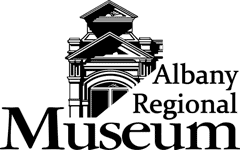By Cathy Ingalls, Albany Regional Museum board member
Let’s hope that patrons of Albany’s Carnegie Library are a little more respectful of the books they check out today than they were 80 years ago.
A story in the Albany Democrat-Herald dated March 13, 1935, states that books were being returned with photos and lettering missing.
One person removed an entire chapter from a book that dealt with the construction and operation of kites. Another book came back with an apology stating that the book was damaged by a puppy that thought it was his toy.
The story goes on to list a variety of items that were tucked between the pages that apparently were used as bookmarks, including nail files, cigarette stubs, combs, mirrors, quilt patches, a love letter, postcards, unpaid bills, embroidery, lace, photos and a check for $100.
Information about the history of the Carnegie Library, 302 Ferry St. S.W., that opened on June 23, 1914, is plentiful and can be found in scrapbooks kept at the library, in Democrat-Herald news files and in a cabinet at the Albany Regional Museum.
The movement to open a library in Albany began in 1907 with the Modern Travelers Club, which was the city’s first women’s literary society founded in 1898. The group still meets.
Member Sarah Adams, then president of the club, formed a committee to begin gathering books and other materials for a new library.
Minutes from a May 31, 1907, meeting at the Linn County Courthouse refer to the initial beginnings of the new library. The directors chosen to serve were H.H. Hewitt, Frank Miller, A.C. Schmidt Mrs. S.E Young, Mrs. J. K. Weatherford, Mrs. H.F. Merrill, Dr. M.J. Ellis, Miss Lucy Gard and F.P.Nutting.
A constitution and bylaws were adopted on Aug. 14, 1907, and committees were appointed later that month.
A little more than a year later, Miss Drake from the state library visited the group to assist with cataloging books. And then on Sept. 11, 1908, the library opened its doors to the public with Gard employed as librarian.
The collection took up one room in a brick building at the site of the former Albany-Magnolia Laundry at Second and Ferry streets.
The library was open Monday, Wednesday and Friday.
In 1910, the city took control of the library and applied for a Carnegie Foundation grant to help build a stand-alone library.
Albany’s Carnegie Library was among 1,689 nationwide and 31 in Oregon that Scottish-American, philanthropist and steel magnet Andrew Carnegie helped financially. He pledged $12,500 to construct a public library in Albany if the city provided a staff and matching funds.
The S.E. Youngs offered a portion of their yard for the site, and ground was broken for the $20,000 structure in June 1913. When the building was completed, volunteers carried the then 3,200-book collection from the old facility to the new one. Mrs. Young took in the first book, a Bible. Attempts to locate that Bible have not been successful.
The 6,000-square-foot facility boasted an auditorium in the basement that could seat 200 people.
Carnegie’s wish to finance libraries on a large scale took off starting in 1899 after the Civil War, when many women’s clubs were forming, and they were the groups most responsible for organizing the construction of libraries.
Most of Carnegie’s libraries were unique in design and were built in a number of styles, including Beaux-Arts, Italian, Renaissance, Baroque, Classical Revival and Spanish Colonial. Each community chose the style it wanted.
By the early 20th century, Carnegie’s buildings were considered to be the most imposing structures in many of the nation’s small communities.
By February 1923, the Albany library contained 8,200 books: 6,100 were in the main portion of the library, while another 2,100 were kept in a section of the building operated by the school district.
Someone got the idea in May 1923 to plant red, white and blue flowers around the outside of the building. The plants came from Miss Elizabeth Hall of the Hall Floral Shop.
Albany’s Carnegie Library ran along at a good clip until representatives of Fred Meyer volunteered to donate land in 1974 on Waverly Drive if the city would construct a new library on that site. Fred Meyer thought that people would be more willing to visit the Fred Meyer store if there were a library next door.
As people flocked to use the new library and city budgets became tight, some city councilors began to suggest that the Carnegie Library be closed. However, Councilor Dick Olsen has fought successfully to keep the downtown library open.
At one point, enough money was found to restore the interior of the building to what it looked like when it opened. Over the years, the Albany Public Library Foundation has paid for books, computers and furnishings and underwritten programs and events.
At one time the regional museum’s collection was housed in the basement’s library. The artifacts now are at the regional museum, 136 Lyon St. S. The museum is open from 11 a.m. to 4 p.m. Tuesday through Friday, and 10 a.m. to 2 p.m. Saturdays.
Hours at the Carnegie Library are 10 a.m. to 6 p.m. Monday through Friday.
